Search
Search Results

Article
Ten Juneteenth Myths
The celebration of Juneteenth – originally known as "Freedom Day" – began on 1 January 1866 in Texas and, since then, a number of myths have grown up around the event it commemorates: the issuance of General Order No. 3 in Galveston Texas...

Article
History of Juneteenth
Juneteenth is an annual event celebrating the end of chattel slavery in the United States in commemorating the issuance of General Order No. 3 (which included the line "all slaves are free") in Galveston, Texas on 19 June 1865. In 2021, Juneteenth...
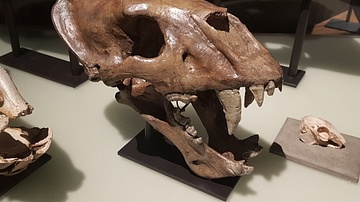
Image
Homotherium Skull
Cast of the skull of a scimitar-toothed cat (genus Homotherium) which appeared across Africa, Eurasia and the Americas during the Pliocene (c. 5 million - c. 2,6 million years ago) and the Pleistocene (c. 2,6 million- c. 12,000 years ago...

Definition
Jean Lafitte
Jean Lafitte (also spelt Laffite, c. 1780 to c. 1820 CE) was a Franco-American leader of pirates and privateers who captured merchant vessels of various states in the Gulf of Mexico from 1810 to 1820. Lafitte proved an invaluable ally for...
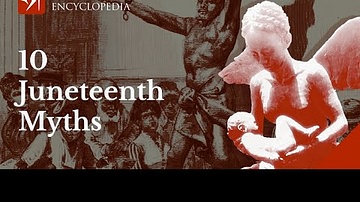
Video
Ten Myths About Juneteenth
Juneteenth is an annual event celebrating the end of chattel slavery in the United States in commemorating the issuance of General Order No. 3 (which included the line "all slaves are free") in Galveston, Texas on 19 June 1865. In 2021, Juneteenth...
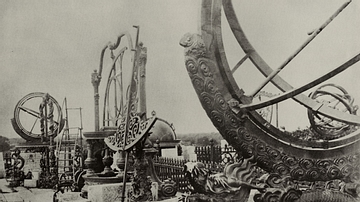
Image
Beijing Observatory Instruments
A c. 1877 CE photograph of the remains of instruments at Beijing's Observatory. Astronomy evolved in 16th-17th century CE China as a result of the introduction of scientific ideas by Jesuit missionaries such as Ferdinand Verbiest (1623-88...
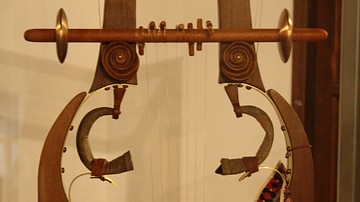
Image
Ancient Greek Kithara
A reconstruction of the ancient Greek stringed instrument. It was associated with the god Apollo, regarded as the most gifted player of the instument and patron of musicians. (Museum of Ancient Greek Musical Instruments, Katakolon, Greece).
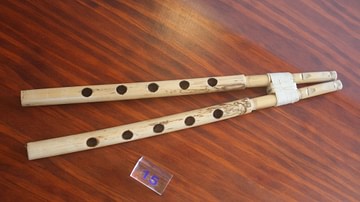
Image
Greek Double Aulos
The ancient Greek double aulos (diaulos) consisted of two pipes (auloi) attached at the mouthpiece and sometimes held in place with a leather strap (forveia) to the player's face. The pipes could be of equal length or unequal, the latter...
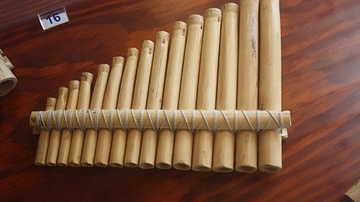
Image
Panpipes
A modern reconstruction of panpipes (or syrinx), first used by shepherds in the Cycladic islands as early as the third millennium BCE were a popular musical instrument in ancient Greek culture and are often depicted on Greek pottery. (Museum...
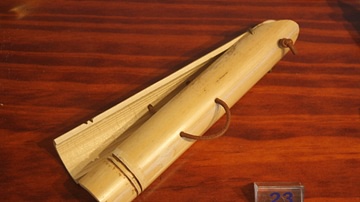
Image
Ancient Greek Clapper
A reconstruction of the clapper (Krotala), an ancient percussion instrument made from cane, shell, wood or metal. Usually held in each hand with thumbs and middle finger through the leather loops for stability, they were played much like...